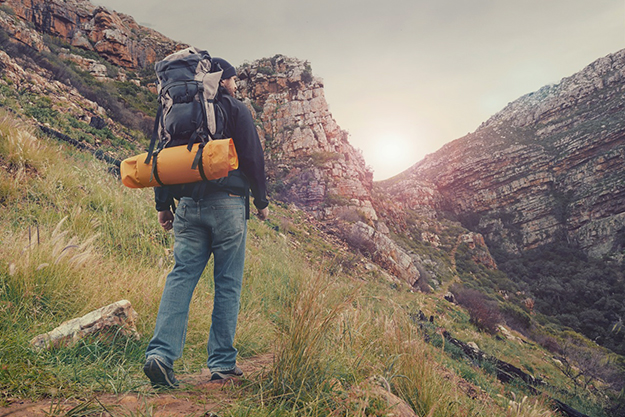Advertisement
I recently went on my first hike-in camping trip with friends who were also backpacking novices. By the end of the first day, we were exhausted, in pain and wishing it were over. Here’s some hard-earned advice for others contemplating a backcountry trek.
Distance
Advertisement
If you’re moderately fit, assume you’ll cover two kilometres an hour—three if it’s an easy trail. Plan a safe, short distance for at least your first day or two of fully laden hiking; four to five hours on the trail is plenty for newbies.
Gear
That old Coleman stove or family-size canvas tent is going to feel like 1,000 pounds on your back after a few hours. You don’t need a new pile of high-tech, ultralight gear, but you do need to be realistic about what to bring along (dehydrated food is a good start). Before your big adventure, take your fully loaded pack on a day trip. That way, you’ll know just how heavy the pack will be—before you find yourself sore, overloaded and days from civilization. And for your test ride, remember to pack the complete supply of water you’ll be bringing on your actual hike.
Advertisement
Boots
Get actual hiking boots, which provide much-needed ankle support and foot protection. Wear your new boots for short periods indoors, then for longer and longer walks outdoors. They should be ready for hiking once you can comfortably spend a day in them. Sturdy hiking boots can be as difficult to tighten as hockey skates and just as uncomfortable when they don’t fit properly. There are several great lacing techniques to ensure your boots fit snugly—ask an outfitter or search the Internet for tricks such as “heel locks,” “hook loops” or “lacing windows.”
Blisters
Properly broken-in and laced-up boots should be comfortable. Period. Of course, if you spend five days hiking a mountain ridge, your feet will start to suffer. Any discomfort, however, should clearly be the fault of the walking, not the boots. At the sign of even the slightest pain, stop and check your feet, especially early on in the journey. Take extra care if the discomfort is localized, such as on the back of a heel or the side of a big toe. Stick moleskin over any blisters or sore spots to protect the area from further friction. The best blister care, however, is prevention: pay attention to your gear, route and boots ahead of time and you should experience the outdoors with joy and enthusiasm—not pain and suffering.

